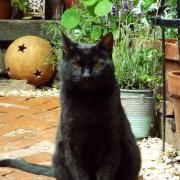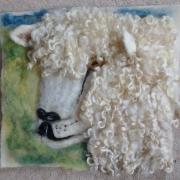Animal magic with the media vet and chef to pets
I’ve just returned from a conference on pet care in London, and one of the stand-out themes was cats and how under-served they have been by the market in recent years compared to dogs.
There have been so many exciting innovations for dogs, from personalised nutrition to activity monitors, but far fewer products and services aimed at the feline market. However, this is changing, and there were several really interesting brands at the conference showcasing their new cat-focused products and services – and one that particularly caught my eye was an activity tracker for cats called Moggie that sends the pet parent updates by text so they know what their beloved puss is up to when they are out of the house. And it’s not just aimed at over-indulgent owners – devices like this could play a role in identifying the early stages of stress and anxiety in cats and help prevent behavioural and physical health problems that can occur as a result.
I remember a case from a few years ago where this kind of innovation may have helped by allowing the owners to recognise what was going on at an earlier stage. The case involved a lovely black cat called Sylvester, and for years he had the run of a large territory at the back of his owner’s house in the country. The only time I would see him would be for his annual vaccinations and worming – otherwise, according to his owner, he was the typical happy outdoor cat.
This all changed over the course of a six-month period, though, when a new housing development sprang up behind the garden, and suddenly Sylvester’s territory was filled with new buildings, people, and most importantly, lots of new cats.
‘He changed from being a lovely, happy cat into a nervous wreck,’ said Sylvester’s owner, Mr Gill, when I saw him to discuss his behavioural issues, which had become quite pronounced by this stage, ‘and now he just hides under blankets in the bathroom – and pees all over the house.’
Looking at Sylvester it was really shocking to see the change that had taken place. Gone was the bold, adventurous cat, and in his place was a thin, agitated cat who looked thoroughly miserable.
The reason for Sylvester’s decline was undoubtedly due to the stress the new housing development and influx of other cats into his neighbourhood had put on him. It had come on very gradually, starting with the occasional ‘accident’ in the house before developing into the more pronounced behavioural and physical signs that eventually led to his owners bringing him in to see me. Despite their reputation as laid-back animals, cats are very sensitive to stress, and new cats in their territory can be incredibly upsetting for them – and urinating in the house is often one of the results, as they attempt to reinforce the central part their territory with pheromone smells when they feel under threat.
Given the advanced state of Sylvester’s problems, there was no easy cure, but tips such as cat-proofing their garden to stop other cats getting into the main area of Sylvester’s territory, and fitting a micro-chip-activated cat flap prevented intruders from gaining access to the house itself, definitely helped. And we also used a special pheromone spray which can help to relax stressed cats and reduce urine marking.
Cases like this one just go to show the benefits that new pet tech can bring, as had Sylvester been wearing an activity monitor, then his owners would have been able to spot the changes in his routine much earlier – and maybe we could have prevented his decline, which ended up taking over a year to fully reverse.
Follow Joe on Twitter: @joethevet
READ MORE: Did you know that dogs have 300 million olfactory receptors in their noses?



























